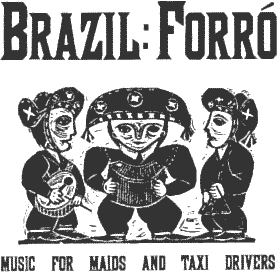Cultural tourism
 Fortaleza
Fortaleza
 Ceara
Ceara
 Tourism in Ceara
Tourism in Ceara
 Tourism in Fortaleza
Tourism in Fortaleza
Brazil, a country of continental dimensions, has several different macro regions within its territory. Ceará has a cultural heritage which, on one hand, makes the State integrate with the rest of Brazil and, on the other hand, shows a uniqueness which attacts even other Brazilians interested in regional culture.

Small sculptures
Ceará, like most of Brazil, was once the home of Indians, and their legacy (in names of places, in food, in vocabulary, in songs and dances) is still visible. Ceará was settled by the Portuguese, and reminiscences of their culture are still present in the architecture of old buildings and in the exhibitions of Museums.
The Jesuits, the religious and educational arm of the Portuguese King, had also a strong presence in Ceará and left their traces. Even after the Jesuits left, the population cultivated a strong religiosity, which shows in several churches and pilgrimages.
Ceará is one of the States of the Northeast, and most of its area is in the semi-arid Sertão, where the sun is always shining, and the rains are unpredictable. This makes the lives of the people here tougher. Getting food, water, transportation, clothes, everything was difficult, because of the natural difficulties.
And this has reflects on the culture. Because everything was difficult to get, everything had to be created and used in a more creative way. Food is based on tough plants, like mandioca and corn, or adopted creative solutions, such as the jerked beef. Clothes use a lot of leather, easy to obtain and very resistant. Music and dance, such as omni present forró, are based on simple but versatile instruments like zaboomba, triangle and accordion.

Band of Forró
Because more sophisticated industries could not be established in the Sertão, many people developed skills to make handcrafts; and these skills were passed from one generation to the next, and are still alive today.
In Ceará, the link between past and present and the contact and familiarity with the cultural legacy open up new perspectives to value and revive the patrimony, strengthen traditions and rediscover material and immaterial cultural possessions, frequently covered up by modern conceptions. All the regions have a rich cultural collection represented by art, tradition and memory.
These are concepts found all over the State, which is also highlighted by its concern in preserving them. Rich in handcraft, Ceará creates crochet, wood, pottery, embroidery, wicker, straw, bamboo, knit and lace products.
The semi-precious stones are also explored and transformed into jewelry in Quixadá and Quixeramobim.
In Juazeiro do Norte, besides religiousness, one can see artisans' woodwork for home decoration and functional uses. In Beberibe, the beaches with colorful sands charm everyone, especially when they are used to produce sand bottles with landscapes, made by local craftsmen.
Fortaleza, Aracati, Icó, Viçosa do Ceará and Sobral have many buildings protected by the Institute of the Historic and Artistic Heritage (IPHAN). The town of Aquiraz is the oldest in the State, having been the first capital of the province. The sugar-cane mills keep the environment rustic and also tell some of the History of Ceará.
See also:
»Secretary of Culture. Official site, maintained by the State of Ceará. Publishes and up to date calendar of cultural events in the Sate.
»Ceara Cultural. Commercial site, focused on Culture of Ceara.
Back to Top